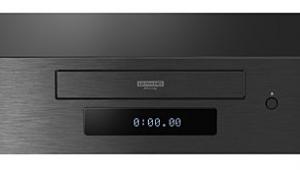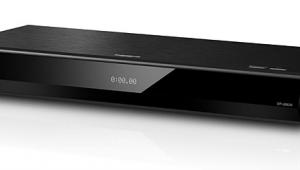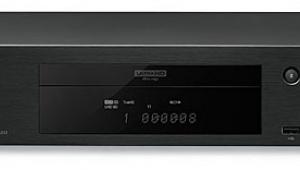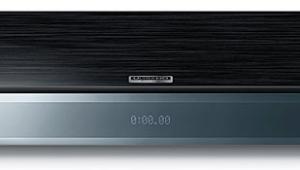Sony BDP-S350 Blu-ray Player Setup & Tests
Setup was straightforward, especially when using HDMI. If your system can't handle HDMI, there is also a component output along with coax and optical digital-audio outputs, though these will not give you the full resolution of the new lossless audio codecs.
In the Audio Setup menu, you specify whether the BDP-S350 will decode the advanced audio codecs or pass their bitstreams. The audio settings are a little confusing, since there are so many of them. However, this does provide additional flexibility. For instance, it is necessary to instruct the player how you want it to handle DTS and Dolby formats individually. You could have it pass DTS bitstreams (since it can't decode them) and decode Dolby soundtracks and send them as PCM.

Over in the Video Setup menu, you specify aspect ratio, video output resolution, and 24fps playback. There is also a function Sony calls Cinema Conversion Mode, which works from the HDMI or component output. This mode detects the type of source material—video- or film-based—and uses the most appropriate cadence (2:2 or 3:2); this also depends on the 24fps setting.
There are five different color settings—YCbCr (4:2:2), YCbCr (4:4:4), RGB (16-235), and RGB (0-255). Additionally, the x.v.Color Output can be enabled or disabled depending on whether or not your display supports the xvYCC color space.
To test the internal video processor's deinterlacing capabilities, I used the HQV Benchmark Blu-ray test disc with the player set to output 1080p. The BDP-S350 performed exceptionally well, better than my PS3 and the Samsung BD-P1500, which I reviewed a couple months ago.
In one test, there are three bars moving up and down on the inside of a circle. On the BDP-S350, there were no visible jaggies on any of the bars. In the second test, there is a rotating bar, and jaggies started to appear around 7 degrees. This is considered a very shallow angle—the shallower the angle, the better the diagonal-filtering capabilities of the player.
The video resolution-loss test showed some serious flickering in the high-frequency vertical burst and banding in the mid-frequency vertical burst, which indicates that the player's processor was not deinterlacing video properly, even though I had Cinema Conversion set to Auto. On the film resolution-loss test, I saw the same flickering in the high-frequency vertical burst, indicating poor film deinterlacing, and the high-frequency horizontal burst was solid gray. There was also a color cast from pink to cyan in the low-frequency horizontal burst as the test pattern moved back and forth. During a camera pan across an empty football stadium, the upper bleachers lost definition and sharpness until the camera stopped moving.
To test the player's upconversion capabilities, I looked at the HQV Benchmark DVD. On the rotating bar, jaggies started to appear around 20 degrees, getting worse at around 10 degrees. In the test with three moving bars, there are slight jaggies on all three bars. A third jaggies test on this disc shows an American flag waving in the wind against a brick building. Jaggies were clearly visible in the flag, and the building in the background lacked detail, looking more like stucco than brick.
In the detail test, objects at a distance were a bit blurry but not indistinct. The film-detail test also revealed a loss of resolution, showing seats in the stands of a race track as smooth rather than sharply defined. It took the Sony's processor a few moments to lock onto the clip's 3:2 pulldown.
- Log in or register to post comments



























































